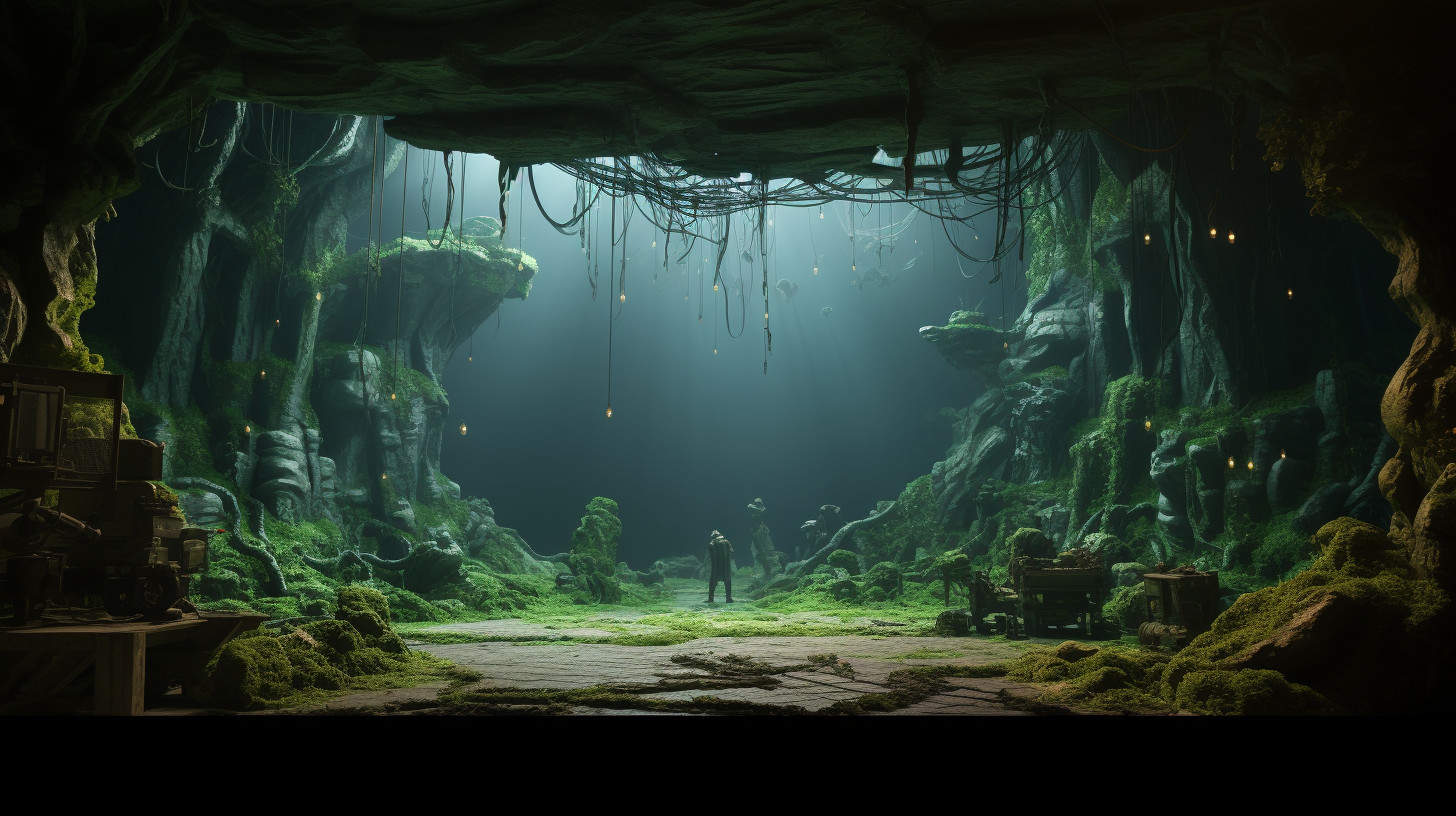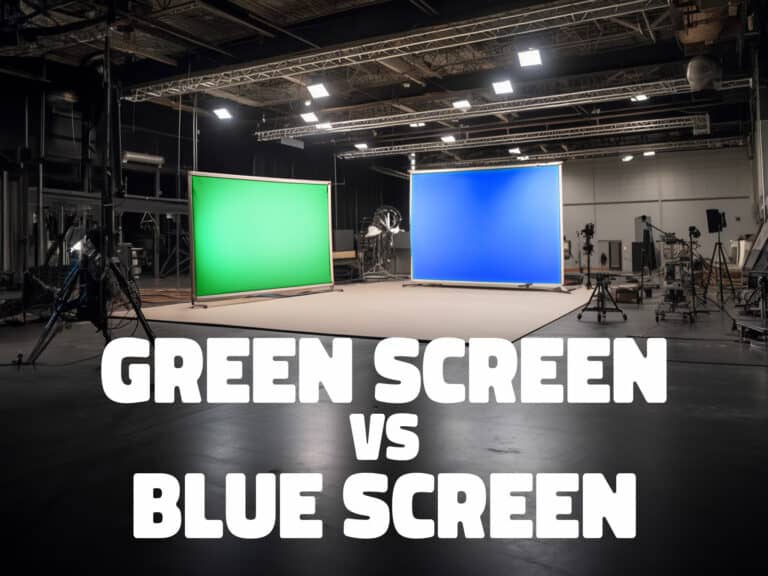Visual Effects as a Career Choice: Opportunities and Challenges
Are you considering a career in visual effects? Exciting opportunities await you in this dynamic industry, but it’s not without its challenges.
In this article, we will explore the ins and outs of visual effects as a career choice, highlighting the key skills and qualifications needed, as well as the various specializations within the industry.
Discover the latest trends and technological advancements, and gain insights into the work-life balance and future opportunities and challenges in the field of visual effects.
Key Points:
- The visual effects industry is dynamic and constantly evolving
- High demand for visual effects professionals in the entertainment industry
- Visual effects revolutionize filmmaking, advertising, and education
- Visual effects offer endless creativity and exciting career opportunities
Overview of the visual effects industry
If you’re considering a career in visual effects, understanding the industry landscape and its various aspects is crucial. Visual effects as a career can be a thrilling and rewarding choice for those with a passion for creativity and technology. Here are three key points to consider:
- The visual effects industry is constantly evolving and embracing new technologies, making it an exciting and dynamic field to work in.
- Visual effects designers work on a wide range of projects, including movies, TV shows, commercials, and video games, allowing for diverse and engaging work experiences.
- Collaboration is a vital aspect of the industry, as visual effects designers often work closely with directors, producers, and other creative professionals to bring their visions to life.
Understanding these aspects of the visual effects industry will help you make an informed decision about pursuing a career in this field. With the growing demand for visual effects professionals, it’s important to explore the opportunities and challenges that lie ahead.
Growing demand for visual effects professionals
- There’s a high demand for visual effects professionals in today’s entertainment industry. As technology continues to advance, the need for skilled individuals who can create stunning visual effects is growing rapidly. From Hollywood blockbusters to TV shows and video games, the demand for visual effects has never been higher.
- The rise of streaming platforms has also contributed to the increased demand for visual effects professionals. As more original content is being produced, there’s a need for engaging and visually stunning visuals to captivate audiences.
- Additionally, the COVID-19 pandemic has further highlighted the importance of visual effects in the entertainment industry. With production halted and social distancing measures in place, visual effects have become essential in seamlessly blending real-life footage and computer-generated imagery.
- As a visual effects professional, you have the opportunity to work on exciting projects, collaborate with talented individuals, and bring imagination to life. However, with this high demand comes challenges such as tight deadlines, long hours, and constantly evolving technology.
- In conclusion, if you have a passion for creativity, technology, and storytelling, a career in visual effects can be a rewarding choice. With the growing demand in the industry, now is the perfect time to pursue your dreams and make a mark in the world of visual effects.
Importance of visual effects in various industries
The importance of visual effects in various industries can’t be overstated. Visual effects have become an integral part of filmmaking, advertising, and even education. They have the power to captivate audiences, enhance storytelling, and communicate complex ideas in a visually appealing way.
- Film industry: Visual effects have revolutionized the way movies are made, allowing filmmakers to create realistic and immersive worlds that were once unimaginable. From breathtaking action sequences to fantastical creatures, visual effects bring the director’s vision to life on the big screen.
- Advertising: In a world where attention spans are shrinking, visual effects play a crucial role in capturing the viewer’s attention. They help create memorable and impactful advertisements that leave a lasting impression on consumers.
- Education: Visual effects aren’t limited to entertainment; they also have a significant impact on education. They can be used to create interactive simulations, virtual reality experiences, and immersive learning environments, making education more engaging and effective.
The widespread use of visual effects across these industries highlights their importance in capturing audiences’ attention, conveying messages effectively, and pushing the boundaries of creativity.
I. Is Visual Effects a Good Career Choice
Are you considering a career in visual effects? If so, you may be wondering if it’s a good choice.
Well, let’s explore the potential together. We’ll look at job prospects and growth opportunities, as well as salary expectations and earning potential in the field.
Exploring the potential of a career in visual effects
Considering a career in visual effects? You’re on the right track! Visual effects is a field that offers a multitude of opportunities and challenges, making it an exciting and dynamic career choice. Here are three reasons why a career in visual effects could be a perfect fit for you:
- Endless creativity: Visual effects allow you to bring your wildest imagination to life. You have the power to create breathtaking worlds, fantastical creatures, and mind-bending special effects that captivate audiences.
- Continuous learning: Technology is constantly evolving in the visual effects industry, meaning you’ll never stop learning. From mastering the latest software to keeping up with cutting-edge techniques, you’ll always be at the forefront of innovation.
- Collaboration and teamwork: Visual effects is a collaborative field that requires strong teamwork and communication skills. You’ll have the opportunity to work closely with directors, animators, and other talented professionals to create stunning visual experiences.
Embark on a career in visual effects and unleash your creativity while pushing the boundaries of what’s possible in the world of film and entertainment.
Job prospects and growth opportunities in the industry
If you’re serious about a career in visual effects, you’ll frequently find a multitude of job prospects and growth opportunities in the industry. The demand for visual effects professionals is on the rise, thanks to the increasing use of computer-generated imagery (CGI) in movies, television, and video games. As technology continues to advance, the need for skilled visual effects artists will only grow.
From working on major Hollywood blockbusters to creating stunning visual effects for advertising campaigns, there’s no shortage of exciting projects to be a part of. Additionally, the industry offers various career paths, including positions in animation studios, post-production houses, gaming companies, and even freelance opportunities.
With dedication and a strong portfolio, you can carve out a successful and fulfilling career in visual effects. Now, let’s explore the salary expectations and earning potential in this ever-evolving field.
Salary expectations and earning potential in visual effects
As you explore a career in visual effects, it’s important to consider the salary expectations and earning potential in this dynamic industry. While salaries can vary depending on factors such as experience, location, and the size of the company, the visual effects industry offers competitive compensation.
Here are a few key points to consider:
- Lucrative Opportunities: Visual effects professionals have the potential to earn high salaries due to the demand for their specialized skills and expertise.
- Growth Potential: With advancements in technology and the increasing use of visual effects in various industries, there’s a growing need for talented artists and technicians. This creates opportunities for career growth and higher earning potential.
- Freelancing Flexibility: Many visual effects professionals have the option to work as freelancers, which can provide flexibility in terms of projects and income.
As you consider a career in visual effects, it’s important to weigh the earning potential against your passion for the field and your long-term career goals.
Transitioning into the subsequent section, let’s now explore the key skills and qualifications needed to succeed in the visual effects industry.
II. Visual Effects as a Career: Key Skills and Qualifications
When pursuing a career in visual effects, there are several essential skills you need to acquire. These skills include proficiency in software and technologies used in the industry, such as 3D modeling, animation, and compositing.
Additionally, having a strong educational background in visual effects or a related field, along with relevant qualifications, will greatly enhance your chances of success in this competitive field.
Furthermore, it’s crucial to recognize the importance of continuous learning and staying updated with the latest advancements in visual effects to stay relevant and competitive in the industry.
Essential skills required for a visual effects career
Developing strong technical skills is crucial for pursuing a career in visual effects. In this rapidly evolving industry, it’s essential to stay up-to-date with the latest software and tools. Here are three key skills that will help you thrive in a visual effects career:
- Proficiency in industry-standard software: Mastering software like Adobe After Effects, Nuke, and Autodesk Maya is essential for creating stunning visual effects. These tools provide the foundation for creating realistic and immersive visual experiences.
- Attention to detail: Visual effects require meticulous attention to detail. From tracking shots to compositing elements seamlessly, having a keen eye for detail ensures that every frame looks flawless.
- Problem-solving abilities: Visual effects projects often present unique challenges that require creative problem-solving. Being able to think outside the box and find innovative solutions will set you apart in this competitive field.
Educational background and qualifications needed
To pursue a career in visual effects, it is important to have the right educational background and qualifications. While a formal education in visual effects or a related field is not always required, it can greatly enhance your skills and knowledge in the industry. Many universities and specialized schools offer programs in computer graphics, animation, or visual effects, providing you with the necessary technical expertise and artistic abilities. Additionally, obtaining certifications from recognized organizations can demonstrate your proficiency in specific software or techniques. However, it is important to remember that the field of visual effects is constantly evolving, with new technologies and software being introduced regularly. Therefore, continuous learning and staying updated with the latest trends and advancements is crucial to remain competitive in the industry.
| Educational Background | Qualifications |
|---|---|
| Bachelor’s degree in Computer Graphics or related field | Industry-recognized certifications |
| Specialized programs in Animation or Visual Effects | Strong artistic and creative skills |
| Experience with industry-standard software (e.g., Autodesk Maya, Adobe After Effects) | Problem-solving and critical-thinking abilities |
| Knowledge of cinematography and storytelling principles | Strong attention to detail |
| Familiarity with programming languages (e.g., Python, C++) | Effective communication and collaboration skills |
As you can see from the table, a combination of technical knowledge, artistic skills, and soft skills is essential for a successful career in visual effects. By acquiring the right educational background and qualifications, you can position yourself for exciting opportunities in the field. However, it is equally important to recognize the need for continuous learning and staying updated with the latest industry developments, as this will enable you to adapt to the ever-changing landscape of visual effects.
Importance of continuous learning and staying updated in the field
To stay competitive in the field of visual effects, it’s essential for you to continuously learn and stay updated with the latest industry developments. The world of visual effects is constantly evolving, with new techniques and technologies being introduced regularly.
By keeping yourself informed and up to date, you can ensure that you’re equipped with the necessary skills and knowledge to meet the demands of the industry. Here are three reasons why continuous learning is crucial in the field of visual effects:
- Stay ahead of the competition: With the rapid advancements in technology, it’s important to stay ahead of the competition by constantly improving your skills and staying up to date with the latest tools and software.
- Adapt to industry trends: The visual effects industry is driven by ever-changing trends. By staying updated, you can adapt to these trends and provide clients with the latest and most relevant visual effects.
- Enhance your creativity: Continuous learning allows you to explore new techniques and experiment with different tools, ultimately enhancing your creativity and enabling you to create visually stunning effects.
III. How to Become a Visual Effects Designer
If you’re interested in becoming a visual effects designer, there are a few steps you can take to enter the industry.
Pursuing a degree in visual effects or a related field can provide you with the necessary knowledge and skills.
Additionally, building a strong portfolio and gaining practical experience through internships or freelance work can help you stand out in this competitive field.
Steps to enter the visual effects industry
Start your journey into the visual effects industry by gaining a strong foundation in computer graphics and animation. This will help you understand the technical aspects of creating visual effects and give you a competitive edge in the industry.
Here are three steps to help you get started:
- Enroll in a reputable computer graphics or animation program to learn the essential skills and techniques.
- Practice and hone your skills by creating your own projects and experimenting with different software and tools.
- Build a strong portfolio showcasing your best work to demonstrate your abilities to potential employers.
Pursuing a degree in visual effects or related fields
Continue your journey into the visual effects industry by pursuing a degree in visual effects or a related field. A degree in visual effects will equip you with the necessary skills and knowledge to excel in this competitive field. Here are some popular degree programs and the skills they can help you develop:
| Degree Program | Skills Developed |
|---|---|
| Visual Effects | Animation, compositing, 3D modeling, rendering |
| Computer Science | Programming, software development, algorithms |
| Graphic Design | Typography, layout design, digital imaging |
| Film and Media | Storytelling, cinematography, film production |
Building a strong portfolio and gaining practical experience
To become a visual effects designer, you’ll need to build a strong portfolio and gain practical experience in the field. This is crucial to showcase your skills and creativity to potential employers. Here are three key steps to help you on your journey:
- Create diverse projects: Include a variety of visual effects projects in your portfolio to demonstrate your versatility and range of skills. This could include work in different genres, such as sci-fi, fantasy, or action, as well as various techniques like compositing, motion graphics, or 3D modeling.
- Collaborate with others: Working with others on projects allows you to gain practical experience and develop your teamwork and communication skills. Seek out opportunities to collaborate with filmmakers, animators, or game developers to create impactful visual effects that enhance the overall project.
- Stay updated with industry trends: The visual effects industry is constantly evolving, so it’s essential to stay updated with the latest techniques, software, and trends. Attend workshops, conferences, and online courses to expand your knowledge and learn new skills that will make you a valuable asset in the industry.
IV. Visual Effects Industry: Opportunities and Specializations
Are you curious about the different career paths available within the visual effects industry?
There are a multitude of specializations to explore, such as animation, compositing, modeling, and more.
Not only that, but these opportunities extend beyond just film and television – you can also find exciting prospects in gaming and advertising.
Different career paths within the visual effects industry
Exploring various specializations within the visual effects industry can provide you with exciting career opportunities. The field of visual effects offers a wide range of career paths, each with its own unique set of skills and responsibilities. Here are three specializations that you can consider:
- 3D Modeling and Animation: This specialization focuses on creating realistic 3D models and bringing them to life through animation. It requires a strong understanding of anatomy, physics, and storytelling.
- Compositing: Compositors are responsible for blending together various visual elements to create seamless and realistic shots. They work closely with other artists and use sophisticated software to achieve the desired results.
- Visual Effects Supervision: This specialization involves overseeing the entire visual effects process, from pre-production to post-production. Visual effects supervisors collaborate with directors, producers, and artists to ensure that the visual effects align with the creative vision of the project.
Specializations in visual effects: animation, compositing, modeling, etc
If you’re considering a career in visual effects, you may be interested in exploring various specializations within the industry. These specializations offer unique opportunities to contribute to the creation of stunning visual effects in films, television shows, video games, and other forms of media.
Animation involves bringing characters and objects to life through movement and expression. Compositing combines different visual elements to create seamless and realistic shots. Modeling focuses on creating 3D objects and environments that are used in visual effects.
Exploring opportunities in film, television, gaming, and advertising
You can delve into the abundant opportunities in the visual effects industry by exploring film, television, gaming, and advertising. The demand for visual effects in these industries is constantly growing, providing a wide range of career possibilities for aspiring artists like you.
Here are three exciting opportunities to consider:
- Film: In the world of cinema, you can work on big-budget blockbusters or independent films, creating breathtaking visual effects that enhance the storytelling and immerse the audience in fantastical worlds.
- Television: With the rise of streaming platforms and high-quality TV shows, the demand for visual effects in television has skyrocketed. From epic fantasy series to gripping dramas, you can contribute to the visual storytelling and bring imaginative concepts to life.
- Gaming: The gaming industry offers a unique opportunity to blend creativity and technology. As a visual effects artist in gaming, you can create stunning visuals, dynamic environments, and realistic character animations that transport players into immersive virtual worlds.
V. Challenges in the Visual Effects Industry
Are you prepared for the challenges that come with a career in the visual effects industry? With high competition and limited job openings, it’s crucial to stand out from the crowd.
Long working hours and tight deadlines can take a toll on your mental and physical well-being. Additionally, dealing with client expectations and creative challenges requires flexibility, adaptability, and problem-solving skills.
The journey may be tough, but for those who are passionate about visual effects, the rewards can be worth it.
High competition and limited job openings
How can you navigate the high competition and limited job openings in the visual effects industry? It’s a tough question, but not an impossible one to answer. Here are three key strategies to help you stand out and increase your chances of success:
- Build a strong portfolio: In such a competitive field, having a stellar portfolio is crucial. Showcase your best work and demonstrate your skills and creativity.
- Network, network, network: Connect with industry professionals, attend events, and join online communities. Building relationships and making connections can open doors to job opportunities.
- Stay updated and adaptable: The visual effects industry is constantly evolving. Stay current with the latest software and techniques, and be willing to learn and adapt. Being versatile and open to new ideas will make you more valuable to potential employers.
Long working hours and tight deadlines
Managing long working hours and tight deadlines can be a demanding aspect of a career in the visual effects industry. As a visual effects artist, you’re often expected to put in extra hours to meet project deadlines. The nature of the work itself requires meticulous attention to detail, which can be time-consuming.
Balancing your personal life with the demands of the job can become challenging, as you may find yourself sacrificing leisure time and social activities. The pressure to deliver high-quality work within tight deadlines can also lead to increased stress levels and burnout.
However, it’s important to remember that the visual effects industry is fast-paced and constantly evolving. By developing effective time management skills and seeking support from your team, you can navigate the challenges of long working hours and tight deadlines while still enjoying a rewarding career in this exciting field.
Dealing with client expectations and creative challenges
To successfully navigate the visual effects industry, you must adeptly handle client expectations and creative challenges. This requires a unique set of skills and a deep understanding of the creative process. Here are three key aspects to consider:
- Communication: Clear and effective communication is essential in managing client expectations. You need to ensure that you understand their vision and goals, and be able to articulate your ideas and suggestions to them in a way that they can understand.
- Problem-solving: Creative challenges are a constant in the visual effects industry. You must have the ability to think outside the box and find innovative solutions to problems that arise during the production process.
- Collaboration: Visual effects work often involves collaborating with a team of artists and technicians. Being able to work well with others, share ideas, and incorporate feedback is crucial to achieving the desired outcome.
Successfully navigating these challenges will allow you to deliver high-quality work and build strong relationships with clients.
As you explore the world of visual effects, it’s important to also consider the pros and cons of visual effects versus practical effects.
VI. Visual Effects vs. Practical Effects: Pros and Cons
Are you curious about the differences between visual effects and practical effects in the film industry?
Let’s take a closer look at the pros and cons of using visual effects in productions.
While visual effects offer endless creative possibilities, they also come with challenges and limitations.
However, it’s important to remember that visual effects and practical effects professionals can collaborate to create truly immersive and breathtaking cinematic experiences.
Comparison between visual effects and practical effects
When considering a career in visual effects, it’s important to compare the pros and cons of visual effects and practical effects. Here are three key points to consider:
- Flexibility and Creativity: Visual effects offer limitless possibilities and allow for the creation of stunning and fantastical worlds that would be impossible to achieve practically. With practical effects, however, there’s a sense of authenticity and tangibility that can bring a unique charm to a film or project.
- Cost and Efficiency: Visual effects can be expensive and time-consuming, requiring specialized software and skilled artists. On the other hand, practical effects can be more cost-effective and efficient, as they often involve physical props and practical techniques.
- Realism and Believability: Visual effects can create highly realistic and seamless visuals, but there’s still a level of artificiality that can be challenging to overcome. Practical effects, on the other hand, can provide a tangible and visceral experience for both the actors and the audience.
As you weigh these factors, consider your own strengths, interests, and the specific demands of the projects you aspire to work on. Both visual effects and practical effects have their own unique merits and challenges, so choose the path that aligns with your goals and aspirations.
Advantages and disadvantages of using visual effects in productions
When considering the advantages and disadvantages of using visual effects in productions, you can explore the impact they have on storytelling and the overall production process. Visual effects offer a range of benefits, such as the ability to create fantastical worlds and creatures that are impossible to achieve with practical effects alone. They also allow for greater flexibility and control in post-production, enabling filmmakers to make changes or enhance scenes as needed. However, there are also drawbacks to relying heavily on visual effects. It can be costly, both in terms of budget and time, as creating realistic and high-quality effects requires skilled artists and advanced software. Additionally, overuse of visual effects can sometimes detract from the authenticity and emotional connection of a film, as audiences may become more focused on the effects themselves rather than the story being told.
| Advantages | Disadvantages |
|---|---|
| Ability to create impossible worlds and creatures | Costly in terms of budget and time |
| Flexibility and control in post-production | Overuse can detract from authenticity and emotional connection |
| Enhances storytelling possibilities | Requires skilled artists and advanced software |
Collaborative opportunities between visual effects and practical effects professionals
Collaborative opportunities between visual effects and practical effects professionals can lead to dynamic and seamless film productions. When these two worlds come together, the results can be truly extraordinary.
Here are three reasons why the collaboration between visual effects and practical effects professionals is essential:
- Realism: Practical effects bring a tangible and authentic element to a scene, while visual effects enhance and augment these practical elements, creating a truly immersive experience for the audience.
- Creativity: The combination of practical and visual effects allows for limitless creative possibilities. By blending the practical and digital worlds, filmmakers can achieve stunning visuals that push the boundaries of imagination.
- Efficiency: When practical and visual effects professionals work together, they can streamline the production process. By coordinating their efforts, they can find the most efficient and effective ways to achieve the desired outcome, saving time and resources.
VII. Visual Effects Industry Trends and Technological Advancements
Are you ready to dive into the exciting world of visual effects industry trends and technological advancements?
From virtual reality to augmented reality, emerging trends are reshaping the way visual effects are created and experienced.
With the rapid pace of technological advancements, it’s essential for professionals in this field to stay updated with the latest tools and software to stay ahead of the game.
Emerging trends in visual effects: virtual reality, augmented reality, etc
Explore the exciting possibilities of virtual reality, augmented reality, and other emerging trends in visual effects as you embark on a career in the dynamic and ever-evolving field. The visual effects industry is constantly pushing the boundaries of technology, and these emerging trends are reshaping the way we experience and interact with digital content.
Here are three trends that are currently making waves:
- Virtual Reality (VR): With VR, you can create immersive experiences that transport users to entirely new worlds. From gaming to storytelling, VR offers endless opportunities for visual effects artists to create captivating and lifelike environments.
- Augmented Reality (AR): AR overlays digital elements onto the real world, enhancing our everyday experiences. From interactive advertising to educational applications, AR is transforming the way we perceive and interact with our surroundings.
- Mixed Reality (MR): MR combines elements of both VR and AR, seamlessly blending the digital and physical worlds. This exciting trend opens up a whole new realm of possibilities for visual effects artists, allowing them to create mind-bending experiences that blur the lines between reality and fiction.
As technology continues to advance, it’s an exciting time to be a visual effects artist. Embrace these emerging trends and be at the forefront of innovation in the industry.
Impact of technological advancements on the visual effects industry
As a visual effects artist, you can embrace the impact of technological advancements on the industry, allowing you to stay at the forefront of innovation.
The visual effects industry has been greatly influenced by advancements in technology, revolutionizing the way effects are created and enhancing the overall quality of productions.
The introduction of powerful software and hardware tools has enabled artists to create more realistic and immersive visual effects.
With the rise of virtual reality and augmented reality, there’s a growing demand for visual effects that can seamlessly integrate with these immersive technologies.
This opens up new avenues for creativity and career opportunities for visual effects artists.
However, it also poses challenges as artists need to constantly adapt and learn new techniques to meet the evolving demands of the industry.
Importance of staying updated with the latest tools and software
Stay ahead of the game by continuously updating your skills and knowledge with the latest tools and software in the visual effects industry. In a rapidly evolving field like visual effects, it’s crucial to stay up-to-date with the latest industry trends and technological advancements.
Here are three reasons why staying updated with the latest tools and software is important:
- Enhance your creative potential: New tools and software often come with improved features and capabilities, allowing you to push the boundaries of your creativity and achieve stunning visual effects.
- Increase your employability: Employers in the visual effects industry are constantly seeking professionals who are proficient in the latest tools and software. By staying updated, you increase your chances of securing exciting job opportunities.
- Stay competitive: The visual effects industry is highly competitive, and staying updated with the latest tools and software helps you stand out from the crowd and stay ahead of your peers.
VIII. Work-Life Balance in the Visual Effects Industry
Are you struggling to maintain a healthy work-life balance in the demanding visual effects industry?
Do you find yourself constantly battling stress and burnout?
It’s essential to prioritize your well-being and find strategies for self-care and personal growth in order to thrive in this field.
Maintaining a healthy work-life balance in a demanding industry
Achieving a balanced lifestyle can be challenging in the demanding visual effects industry, where work-life balance is crucial for maintaining well-being and productivity. The long hours and high-pressure deadlines can easily blur the line between work and personal life. However, it’s important to prioritize self-care and establish boundaries to ensure a healthy work-life balance.
Here are three strategies to help you maintain equilibrium in this demanding industry:
- Set boundaries: Clearly define your working hours and stick to them. Avoid checking emails or taking work calls outside of these hours to create a clear separation between work and personal life.
- Take regular breaks: Schedule regular breaks throughout the day to recharge and prevent burnout. Use this time to engage in activities that bring you joy and help you relax.
- Prioritize self-care: Make time for activities that promote your physical and mental well-being, such as exercise, meditation, or spending time with loved ones. Taking care of yourself will ultimately enhance your performance and creativity in your work.
Coping with stress and burnout in visual effects careers
To maintain a healthy work-life balance in the demanding visual effects industry, it’s crucial for you to address stress and burnout effectively. The pressure to meet tight deadlines and produce high-quality work can take a toll on your mental and physical well-being.
It’s important to recognize the signs of burnout, such as exhaustion, irritability, and lack of motivation, and take steps to prevent it. Set boundaries between work and personal life, prioritize self-care, and make time for activities that bring you joy and relaxation.
Seek support from friends, family, or professional counselors to help you navigate the challenges of the industry. Remember, your well-being should always be a top priority.
Strategies for self-care and personal growth in the field
Maintaining a healthy work-life balance in the visual effects industry requires actively prioritizing self-care and personal growth. It’s easy to get caught up in the demands of a fast-paced industry, but taking care of yourself is essential for long-term success and happiness.
Here are three strategies to help you navigate the challenges and find balance:
- Set boundaries: Establish clear boundaries between work and personal life. Create designated times for relaxation, hobbies, and spending time with loved ones. Learn to say no when you feel overwhelmed.
- Practice self-care: Take time to recharge and rejuvenate. Engage in activities that bring you joy and help you unwind, such as exercise, meditation, or pursuing a creative outlet. Prioritize your physical and mental well-being.
- Invest in personal growth: Continuously seek opportunities for learning and professional development. Attend workshops, conferences, and networking events to expand your knowledge and skills. Set goals and strive for personal growth to stay motivated and fulfilled.
IX. Future of Visual Effects: Opportunities and Challenges
As you look ahead to the future of visual effects, there are exciting opportunities waiting to be explored.
Predictions suggest that the industry will continue to grow, with potential growth areas and emerging markets opening up new avenues for creativity and innovation.
However, with these opportunities come challenges, and it will be crucial for professionals in the field to address these challenges and adapt to the ever-changing landscape of the industry.
Predictions for the future of visual effects
Embrace the ever-evolving landscape of visual effects and capitalize on the emerging opportunities and challenges it presents. The future of visual effects holds exciting possibilities and potential growth. Here are three predictions for what lies ahead:
- Advancements in technology: With the rapid progress of technology, we can expect even more realistic and immersive visual effects. From improved rendering techniques to the use of artificial intelligence, the tools available to visual effects artists will continue to evolve, allowing for greater creativity and realism in their work.
- Virtual reality and augmented reality: As these technologies become more mainstream, visual effects will play a crucial role in creating immersive experiences. Visual effects artists will need to adapt their skills to work in these new mediums, pushing the boundaries of storytelling and interactivity.
- Global collaboration: With the rise of remote work and digital connectivity, visual effects teams are no longer limited by geographical boundaries. This opens up opportunities for collaboration between artists from different parts of the world, bringing diverse perspectives and expertise to the table.
The future of visual effects is filled with potential, and those who embrace the challenges and stay up-to-date with the latest trends will be at the forefront of this exciting industry.
Potential growth areas and emerging markets
To explore potential growth areas and emerging markets in the future of visual effects, consider the importance of staying informed and adaptable in your career choice.
The field of visual effects is constantly evolving, with new technologies and techniques being developed every day. By keeping up-to-date with the latest advancements, you can position yourself for success in these exciting growth areas.
One such area is virtual reality (VR) and augmented reality (AR), which have gained significant traction in recent years. As more industries and applications embrace VR and AR, the demand for skilled visual effects professionals in these fields is expected to soar.
Additionally, the gaming industry continues to expand, offering numerous opportunities for visual effects artists to create immersive and realistic game environments.
Addressing challenges and adapting to industry changes
Stay adaptable to address challenges and navigate the ever-evolving landscape of the visual effects industry. The field of visual effects is dynamic and constantly changing, presenting both opportunities and challenges for professionals like you.
To succeed and thrive in this industry, here are three key strategies to consider:
- Embrace new technologies: Stay updated with the latest software, tools, and techniques to remain competitive and relevant in the industry.
- Develop a diverse skill set: Expand your knowledge beyond a single area of expertise. Being proficient in multiple aspects of visual effects will make you more versatile and adaptable to changing demands.
- Network and collaborate: Connect with colleagues, attend industry events, and participate in online forums to build relationships and stay informed about new opportunities.
Conclusion
As you reflect on the opportunities and challenges in the field of visual effects, remember that pursuing a career in this industry can be incredibly rewarding.
Despite the challenges, the potential for growth and success is undeniable.
Recap of the opportunities and challenges in visual effects careers
How can you navigate the opportunities and challenges of a career in visual effects? It’s an industry that constantly evolves, offering both exciting prospects and potential obstacles. Here are three key points to remember as you embark on your visual effects career:
- Stay updated with the latest technology and industry trends: Visual effects is a rapidly changing field, so it’s crucial to stay informed about emerging technologies and techniques. Continuously learning and adapting will help you remain competitive and relevant.
- Build a strong network: Networking is essential in any industry, and visual effects is no exception. Connect with professionals, attend industry events, and join online communities to expand your network and increase your chances of finding job opportunities.
- Embrace collaboration and teamwork: Visual effects is a collaborative field that requires working closely with others. Cultivate strong communication and interpersonal skills, as well as the ability to collaborate effectively with different departments and teams.
Encouragement for aspiring visual effects professionals
To succeed in a career in visual effects, you must embrace the challenges and opportunities that come your way with determination and a passion for creativity. The field of visual effects is constantly evolving, and it requires individuals who are willing to adapt and learn new techniques.
Don’t be discouraged by the initial hurdles you may face; instead, use them as stepping stones towards growth and improvement. Surround yourself with like-minded individuals who share your enthusiasm for visual effects, and seek out mentors who can guide you on your journey.
Stay up-to-date with the latest technologies and software, and never stop honing your skills. With dedication and perseverance, you can carve out a successful career in visual effects and make a lasting impact in the industry.
As we conclude our discussion on the encouragement for aspiring visual effects professionals, let’s now turn our attention to the final thoughts on the potential of visual effects as a career choice.
Final thoughts on the potential of visual effects as a career choice
You have endless possibilities and a bright future ahead if you choose visual effects as your career path. The world of visual effects is constantly evolving, offering new and exciting opportunities for those with a passion for creativity and technology.
Here are three reasons why pursuing a career in visual effects can be a rewarding choice:
- Unleash your creativity: Visual effects allow you to bring your wildest imaginations to life. Whether you’re creating fantastical creatures, breathtaking landscapes, or mind-bending special effects, the only limit is your imagination.
- Collaborate with talented professionals: Visual effects is a collaborative field, requiring teamwork and cooperation. Working alongside skilled artists, animators, and technicians, you’ll have the chance to learn from the best and create something truly extraordinary together.
- Make an impact: Visual effects play a crucial role in shaping the entertainment industry. From blockbuster movies to innovative advertisements, your work can captivate audiences, evoke emotions, and leave a lasting impression on people around the world.
With the right skills, dedication, and passion, visual effects can lead you to a fulfilling and successful career. Embrace the possibilities and embark on a journey of endless creativity and innovation.
Frequently Asked Questions
What Are the Average Salaries in the Visual Effects Industry?
You’re probably wondering about the average salaries in the visual effects industry. Well, let me tell you, they can vary depending on your experience and the company you work for.
How Does the Visual Effects Industry Contribute to the Overall Entertainment Industry?
Visual effects contribute to the overall entertainment industry by creating stunning visuals that enhance storytelling. They transport audiences to different worlds, bring imaginary creatures to life, and make the impossible possible, adding a level of magic and immersion to films, TV shows, and video games.
What Are Some Notable Visual Effects Companies or Studios?
Some notable visual effects companies or studios include Industrial Light & Magic, Weta Digital, and Framestore. These companies have made significant contributions to the industry and have worked on blockbuster films that showcase their incredible talent and expertise.
Can You Provide Examples of Famous Films or TV Shows That Heavily Rely on Visual Effects?
In today’s film and television industry, there are countless examples of famous productions that heavily rely on visual effects. From blockbuster movies like “Avengers: Endgame” to hit TV shows like “Game of Thrones,” the use of visual effects is a crucial aspect of storytelling.
Are There Any Specific Software or Tools That Visual Effects Designers Use in Their Work?
There are several software and tools that visual effects designers use in their work. These include programs like Autodesk Maya, Adobe After Effects, and Nuke, which help bring their creative visions to life.







